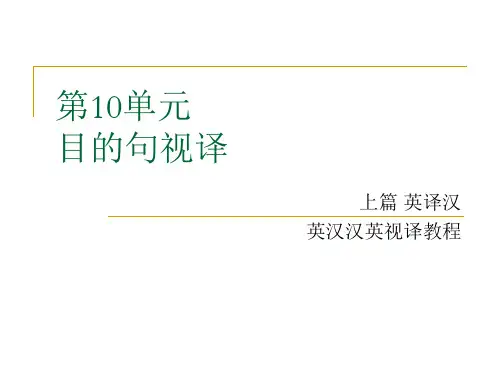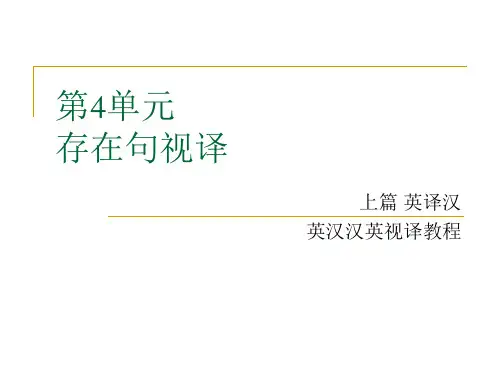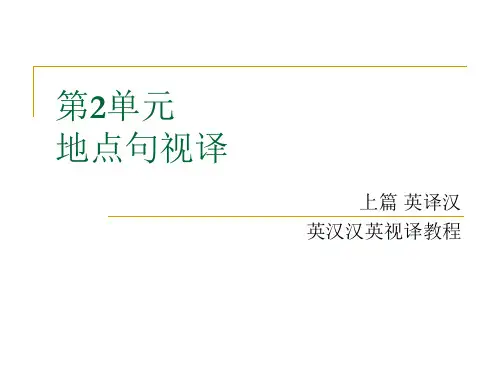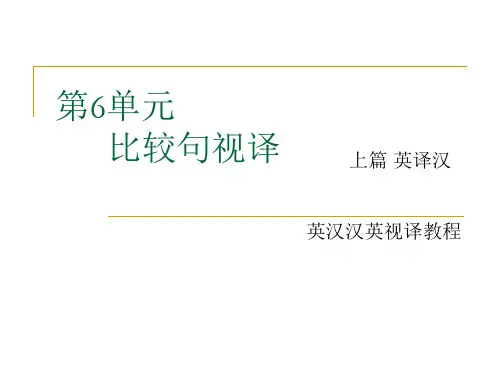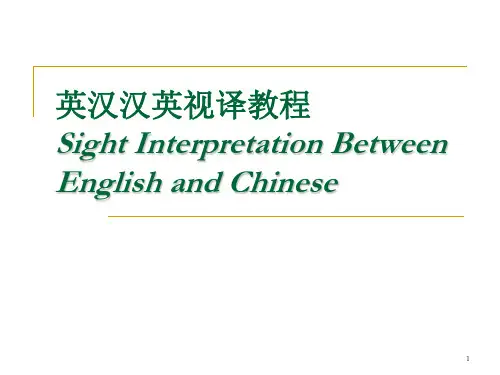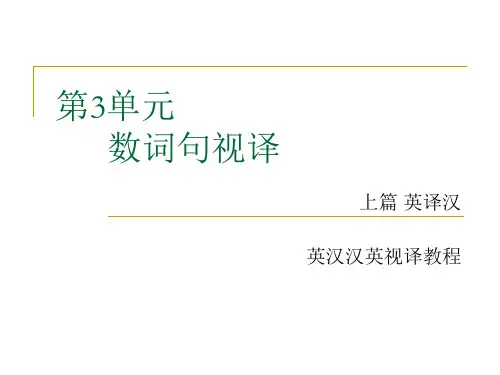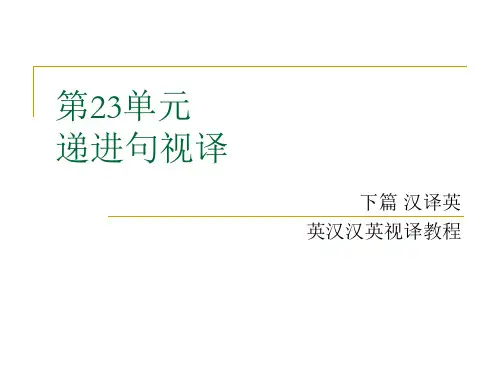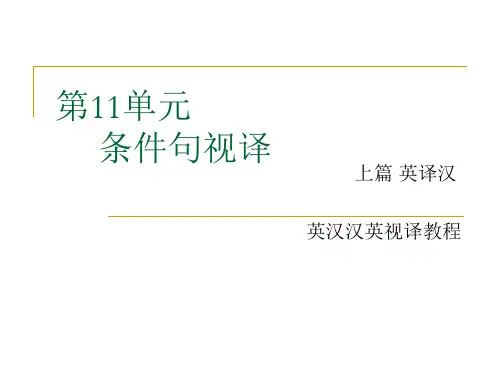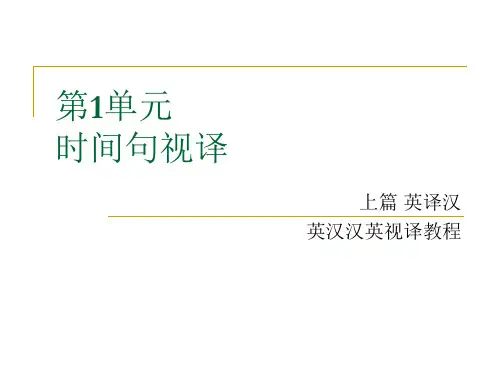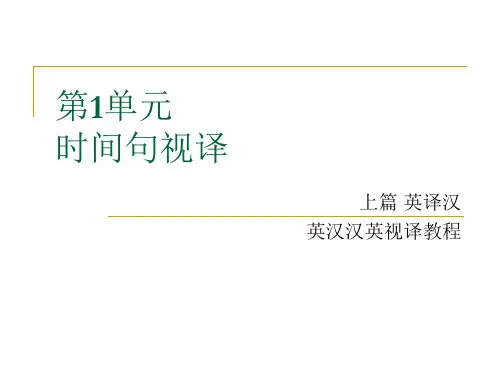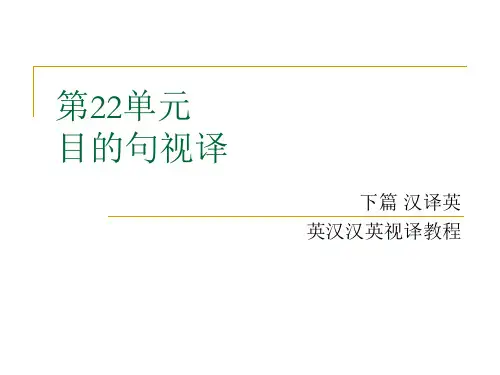第2单元 地点句视译 (例句)
5. In New York, where the movement began when protesters set up a makeshift camp in Lower Manhattan on Sept 17, organizers said the protest grew to at least 5,000 people as they marched to Times Square in midtown Manhattan.
第2单元 地点句视译 (例句)
〈译评〉 此句的难点:一是事件时间倒叙;二是动 作语义名词化表达(clashes in Rome)。 这是与汉语思维方式反差较大的典型英文 句式,翻译难度很大。如果是笔译还好, 译者有充分时间反复斟酌句子结构,但是 在视译条件下译者没有充分时间搬移句子 成分,只能顺坡就势,在英文逻辑基础上 构建基本符合中文口语习惯且通顺达意的 句子,能做到这一步已经实属不易。
第2单元 地点句视译 (例篇)
Japan sees a lot of seismic activity because it sits in an area where one tectonic plate—a shard of the earth’s crust—slides under another. At certain points, the two plates get stuck and strain builds up. When the strain overcomes the strength of the rocks, the plates jerk forward again and trigger a quake. Many researchers had expected the fault that lies off Japan’s eastern shore to behave just as it had over the past few centuries, causing quakes of magnitude 7.5 or 8.0 but nothing larger. And they had used land-based GPS data to carefully map the “stuck” points along the fault. To their satisfaction, these points closely matched the locations where the fault had slipped in the past. Unfortunately, the quake happened where they hadn’t inferred there was a stuck point—it was further away from shore. The quake might have destabilized other areas of the fault line—with special vulnerability at the edges of the rupture from the original event. If this is the case, that means another big quake could occur at the edge of the recent Japan rupture, located some 200 kilometers due east of Tokyo. If that offshore location is, indeed, “stuck,” and sufficient strain is accumulating there, it could be the recipe for another offshore megaquake—much closer to Tokyo.
